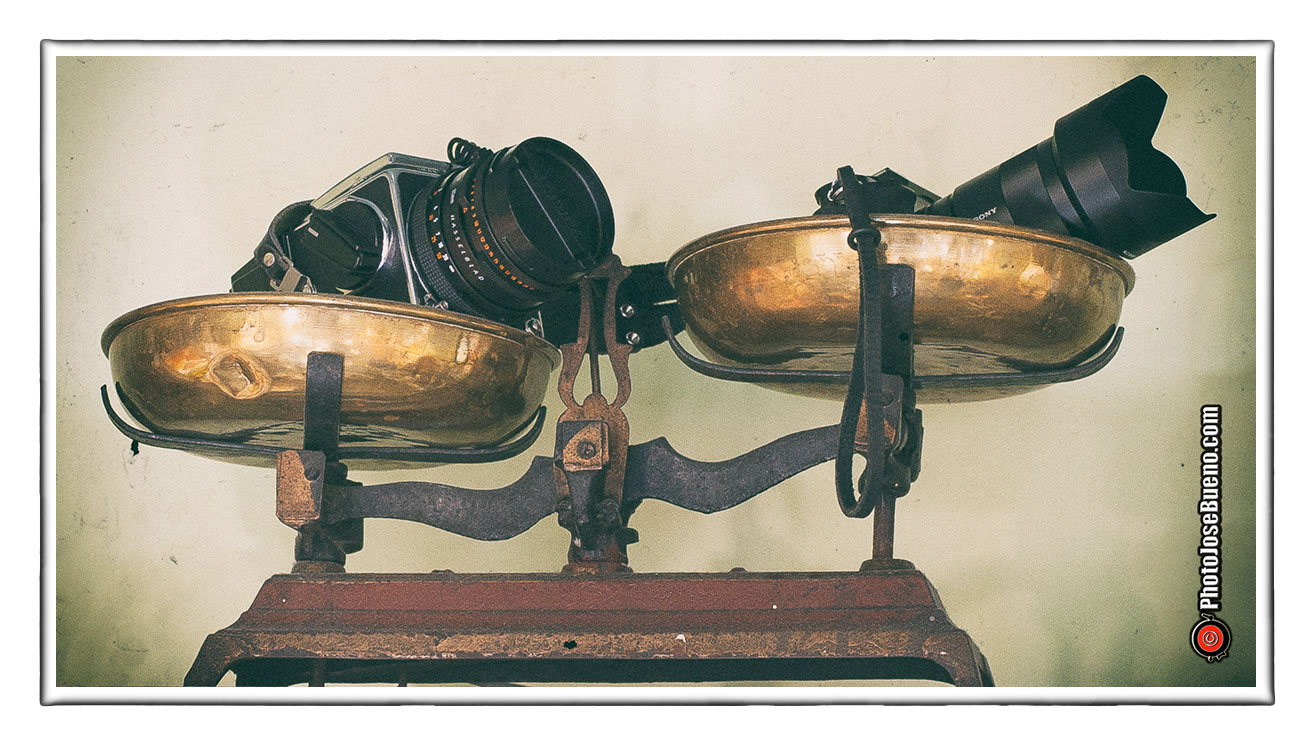
Hace unos años muchos fotógrafos tuvimos que migrar del carrete al sistema digital con todo lo traumático que suponía la inversión más las barreras de entrada que imponía el “revelado informático”, pero todos nos pusimos las pilas y con más o menos tiempo lo hicimos.
Lo cierto es que en esos momentos, la capacidad del sistema digital estaba muy en entredicho y algunas marcas y agencias obligaban a trabajar con un respaldo digital. A fecha de hoy no sé bien si era una forma de seleccionar a los fotógrafos de más poder adquisitivo, dando por hecho la correlación con calidad y es que hubo marcas que hicieron el esfuerzo de readaptar los sistemas de medio formato al sistema digital.
En esos momentos el dilema era invertir en un carísimo respaldo para salvar el equipo de medio formato, estoy hablando de una inversión de unos 25.000 euros o dejar de trabajar en esos entornos de alto standing. Es cierto que había una tercera opción consistente en el alquiler, algo en esa época más complicado por la cultura española de preferir la inversión (compra) en lugar del gasto (alquiler).
En mi caso salvé mi equipo Hasselblad comprando un respaldo que nunca he amortizado ya que luego llegó la crisis, etc, etc.
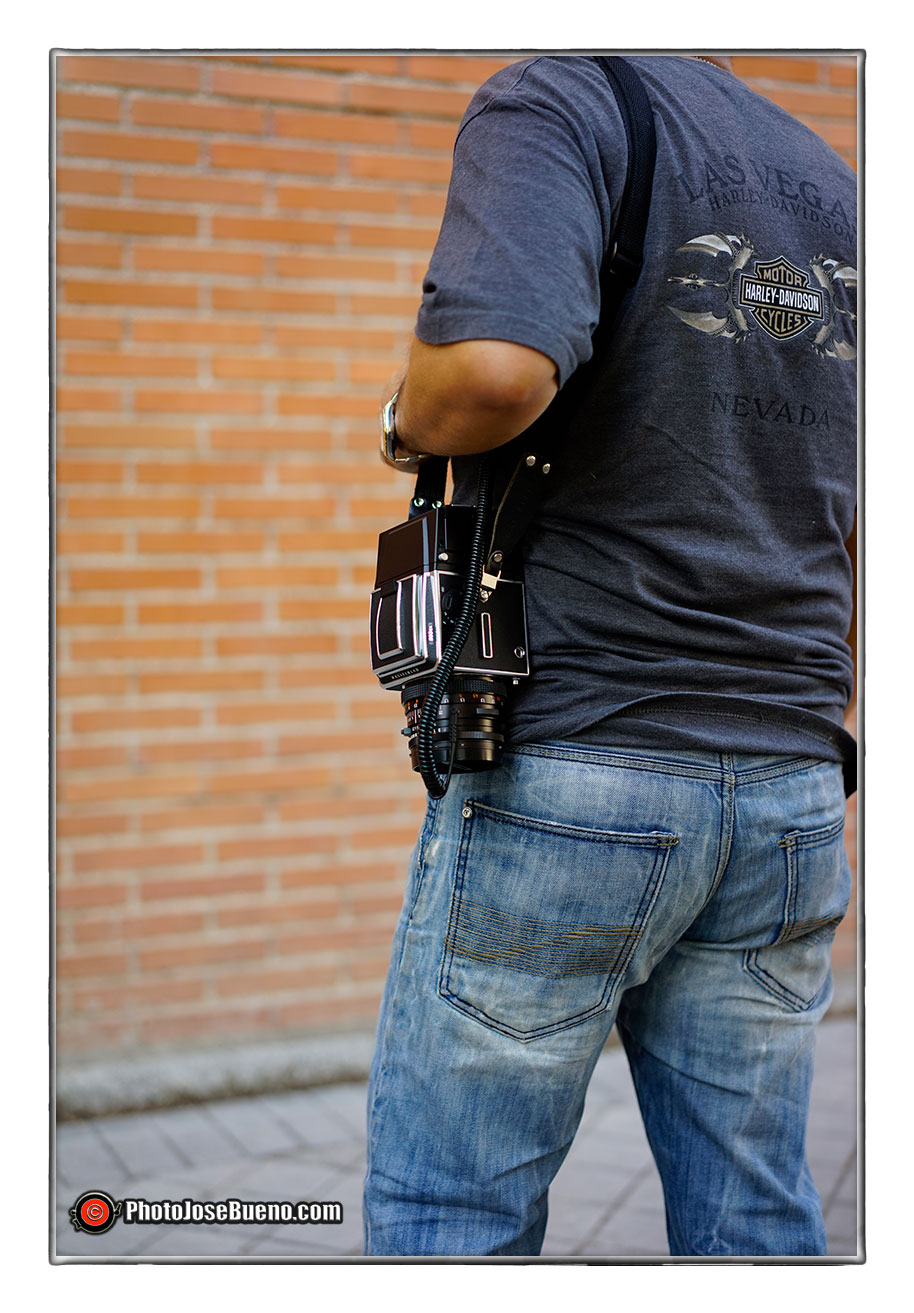
Pero recuerdo mi estreno del flamante Phase One P20 puesto en mi Hasselblad 503 con esos Carl Zeiss que tantas satisfacciones me han dado. Ah! y sin olvidar el fotómetro que aunque es digital todo es muy manual, incluido el sabor del disparador Hassel. Pero tenía la intriga si tanta inversión estaba acorde en comparación con una Nikon D200 que también tenía en esa época.
Me apetecía hacer fotos del Monasterio del Escorial, un sitio majestuoso. Después de hacer varias fotos tenía la misma sensación de cuando tiraba con carrete, es decir tenía ganas de ver el revelado y es que ese respaldo lleva una pantalla meramente informativa y que en mi caso solo la utilizo para ver el histograma.
Recuerdo mi agradable sorpresa cuando comparé las fotos y vi que las de la Nikon eran correctas pero cuando vi el detalle de las que tomé con la Hasselblad y el respaldo Phase One, descubrí la gran diferencia y al menos mi conciencia por la inversión se vio aliviada.
Pero …, sigue estando ese respaldo a la altura? Se ha conseguido superar la calidad con sensores más pequeños, me refiero a los full frame?
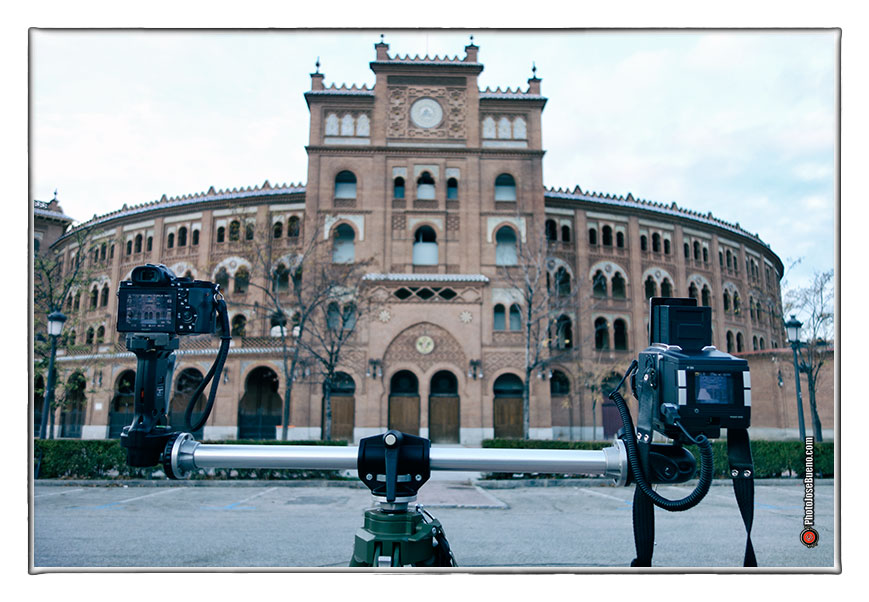
Soy consciente de la vorágine de las marcas por superarse cada día y he probado los respaldos con 80 megapixels etc. pero en esta ocasión vamos probaremos y haremos una comparación de la super Hasselblad 503 con los míticos objetivos Carl Zeiss en el respaldo Phase One P20 versus la Sony A7R, toda una full frame de 36 megapixels.
En la prueba podremos poner el mismo objetivo Carl Zeiss gracias a un adaptador y también veremos el rendimiento del Carl Zeiss 80mm. f:2.8 con sus años a la espalda puesto en la cámara para la que fue diseñado, me refiero a la Hasselblad 503 y el nuevo Carl Zeiss 50 diseñado para la A7R. Ambos son equivalentes por temas de tamaño de sensor. Si sigue leyendo conocerás los resultados.
Tanto en estudio como en exteriores la Sony A7R con el objetivo Zeiss 55 mm. 1.8 ha dado la talla sobradamente y es que como ya he comentado en otras entradas, es una cámara perfecta para tomar imágenes tranquilas en las que hay poco movimiento pues su visor electrónico tiene un “delay” mayor que una réflex. Cara a su utilización en viajes o fotos familiares en mi opinión es una cámara con demasiados megapíxel y se que se puede bajar la cantidad pero eso sería utilizar un deportivo con ruedas de madera.
El tamaño de sus archivos es muy grande, cada foto supera los 100Mb. sin compresión y eso necesita de un hardware potente para su proceso además de una mayor inversión en hardware para su almacenamiento. Sin embargo el respaldo P20 genera unos archivos de apenas 50Mb. sin compresión.
La Sony A7R tiene la ventaja de ser un equipo muy transportable y aunque su mayor debilidad se encuentra en las ópticas disponibles para este sistema tiene como ventaja que con adaptadores se puede poner de todo, incluidas las ópticas Carl Zeiss de la Hasselblad. Tiene distintos sistemas de medición de luz y el sistema focus peaking para enfocar con ópticas manuales.
Si pasamos a la Hasselblad 503CX, retrocedemos muchos años en el tiempo y todo lo que parece normal cuando lees los párrafos anteriores deja de serlo y es que la 503CX por tener no tiene ni pila.
La Hasselblad 503 con el visor de cintura y un respaldo de carrete no es excesivamente grande ni pesada o al menos a mi no me lo parece. Es cierto que cuando cambiamos el respaldo por uno digital, en este caso Phase One P20, el peso aumenta considerablemente y es que aunque ya tenemos pila, no te hagas ilusiones pues hay que seguir midiendo la luz con un fotómetro de mano y el enfoque sigue siendo manual y por definición, Eso se puede cambiar pues la Hasselblad es como un mecano ya que se desmonta prácticamente todo y por supuesto que es muy fácil cambiar a enfoque por imagen partida.
Respecto al Phase One P20, es un respaldo ya algo obsoleto y es que curiosamente tanto el cuerpo Hasselblad como las ópticas Carl Zeiss siguen siendo una pasada pero lo digital envejece muy rápido, ergo todo lo que inviertas en digital hoy será viejo y obsoleto en poco más de un año. El sistema Hasselblad lleva muchísimos años funcionando con el mismo sistema pues desde la segunda guerra mundial el diseño cuadrado de estas cámaras ha sido utilizado por fotógrafos que han pasado a la historia por su calidad.
Como curiosidad decir que aunque la imagen pasa al sensor al igual que cuando el respaldo es de carrete, como la obturación va en el objetivo, inventaron un cable que avisa al respaldo que se ha realizado el disparo, curioso.
Pero dejemos la historia y centrémonos en las pruebas. A priori la sería y contundente apariencia de la Hasselblad en unión al respaldo digital Phase One tenía toda la pinta de merendarse en poco tiempo a una cámara casi de bolsillo y nada más lejos de la realidad. Creo que adelantándome a la conclusión, la pequeña Sony A7R ha barrido en el sentido más amplio a la vieja Hassel.
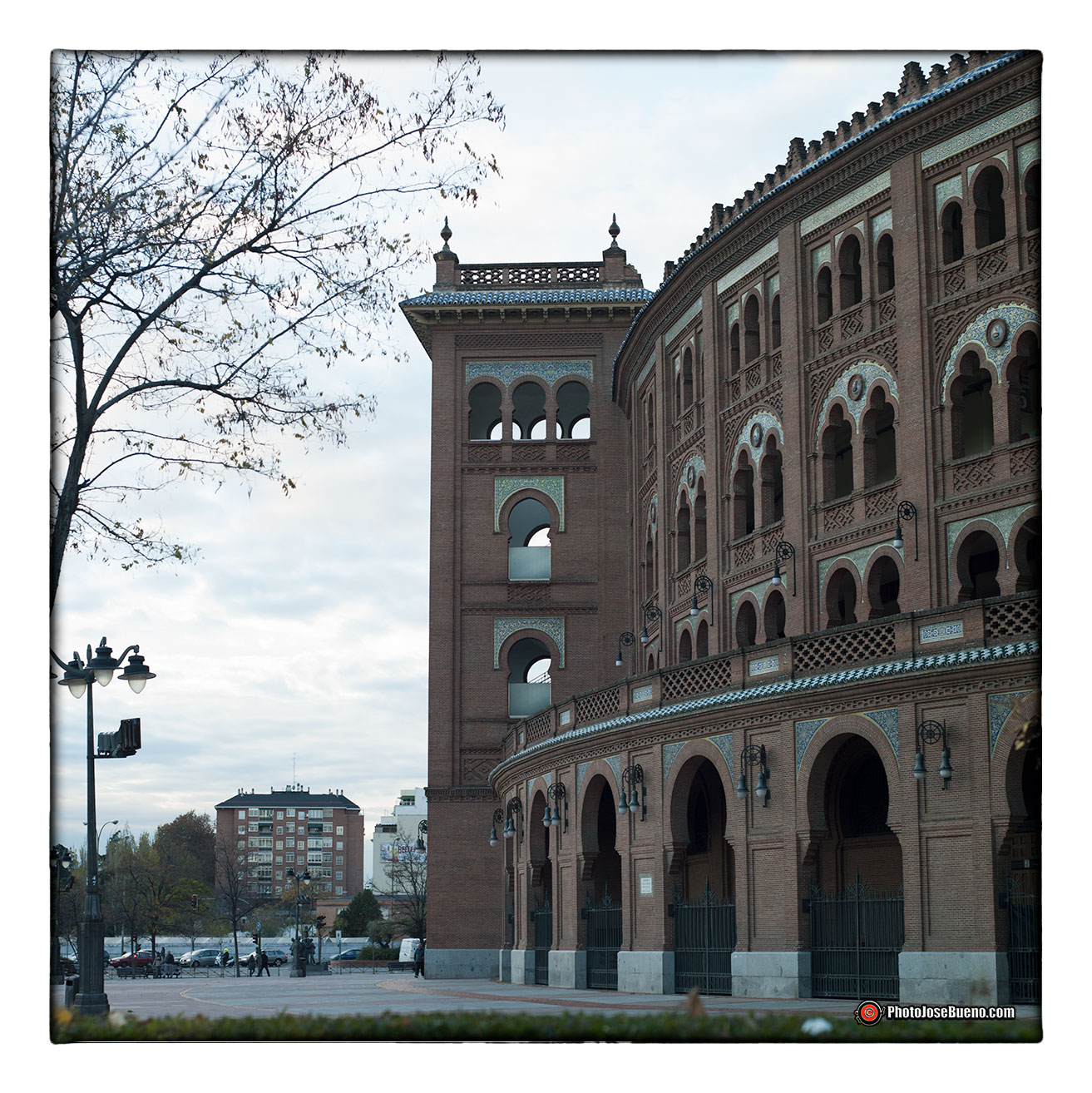
Hasselblad 503 CX – Carl Zeiss 80mm. f:2.8
1/30 seg – f/5,6 – ISO 100
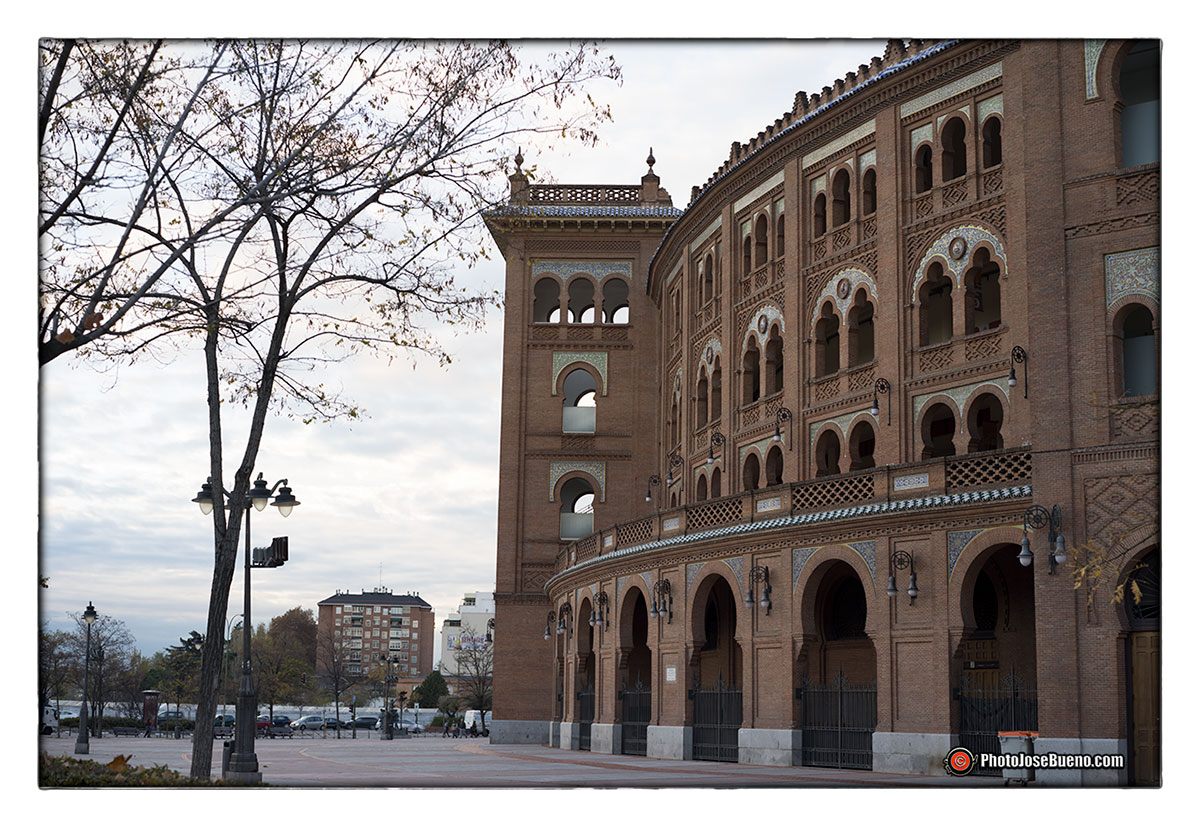
Sony A7R – Carl Zeiss 55mm. f:1.8
1/30 seg – f/5,6 – ISO 100
Las pruebas que he realizado han sido en exteriores con una luz de primera hora de la mañana justo cuando comienza el amanecer. Para ello me lleve un trípode y dos rótulas para disparar ambas cámaras a la vez y en condiciones iguales como ISO, velocidad y apertura. En el caso de la Hassel siempre he realizado los disparos con el espejo ya levantado para evitar trepitaciones y ambas cámaras fueron disparadas de manera remota. La Sony con un disparador remoto y la Hassel con un cable disparador.
Pero es en el recorte donde realmente podemos ver las diferencias. Observa el cartel que apenas se ve en las fotos grandes. En la imagen tomada por la Sony, se puede leer la palabra «London», algo imposible de ver en el recorte de la derecha:
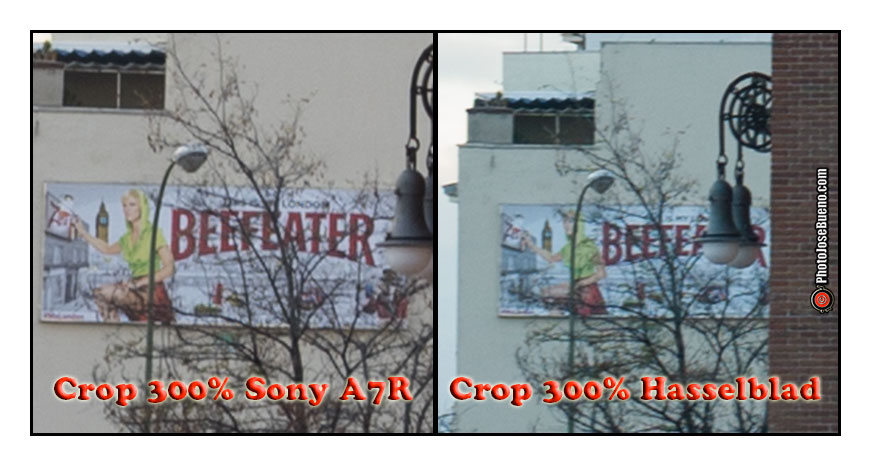
En ambos casos las ópticas eran Carl Zeiss, el 80mm f:2.8 Planar montado en la Hasselblad y el Carl Zeiss 55mm. f:1.8 Sonnar montado n la Sony A7R. Ambos llevan la famosa T del sistema multicapa también conocido como antirreflejos iy desarrollado por Carl Zeiss allá por los años 80.
Ya en el estudio, monte un pequeño bodegón ambientado con lo que más nos gusta, me refiero a unas cámaras antiguas de doble objetivo de la marca Yashica y que en su día marcaron estilo. Para aderezar el bodegón tiré al aire unas hojas secas y así imitar la estación del otoño en el que nos encontramos. Y no podía faltar la música representada por una maqueta de violín. Las cuatro estaciones de Vivaldi estaban pero desgraciadamente no han salido en la foto.
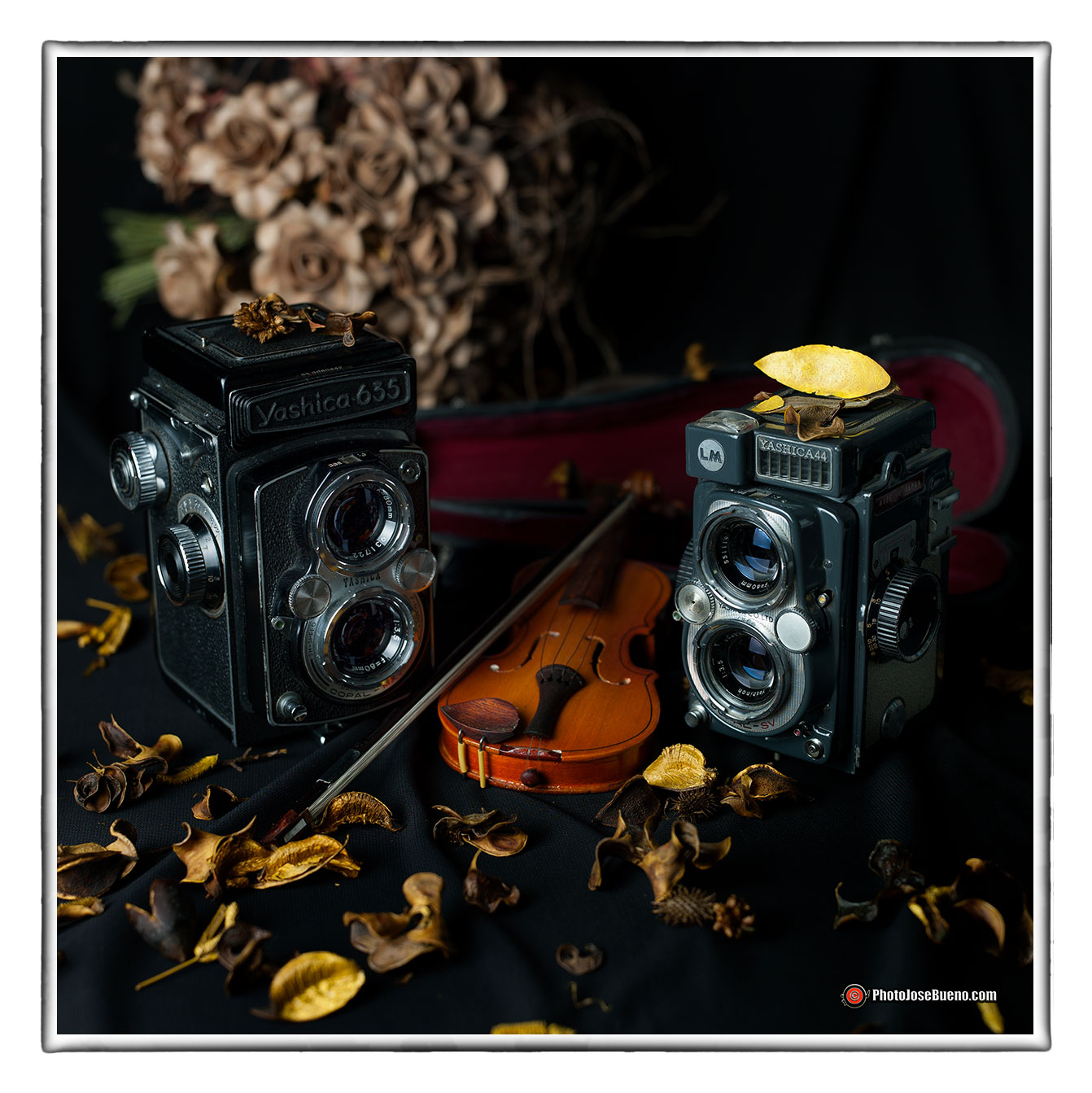
Hasselblad 503 CX – Carl Zeiss 80mm f:2.8 – Phase One P20
1/160 seg – f/5,6 – ISO 50
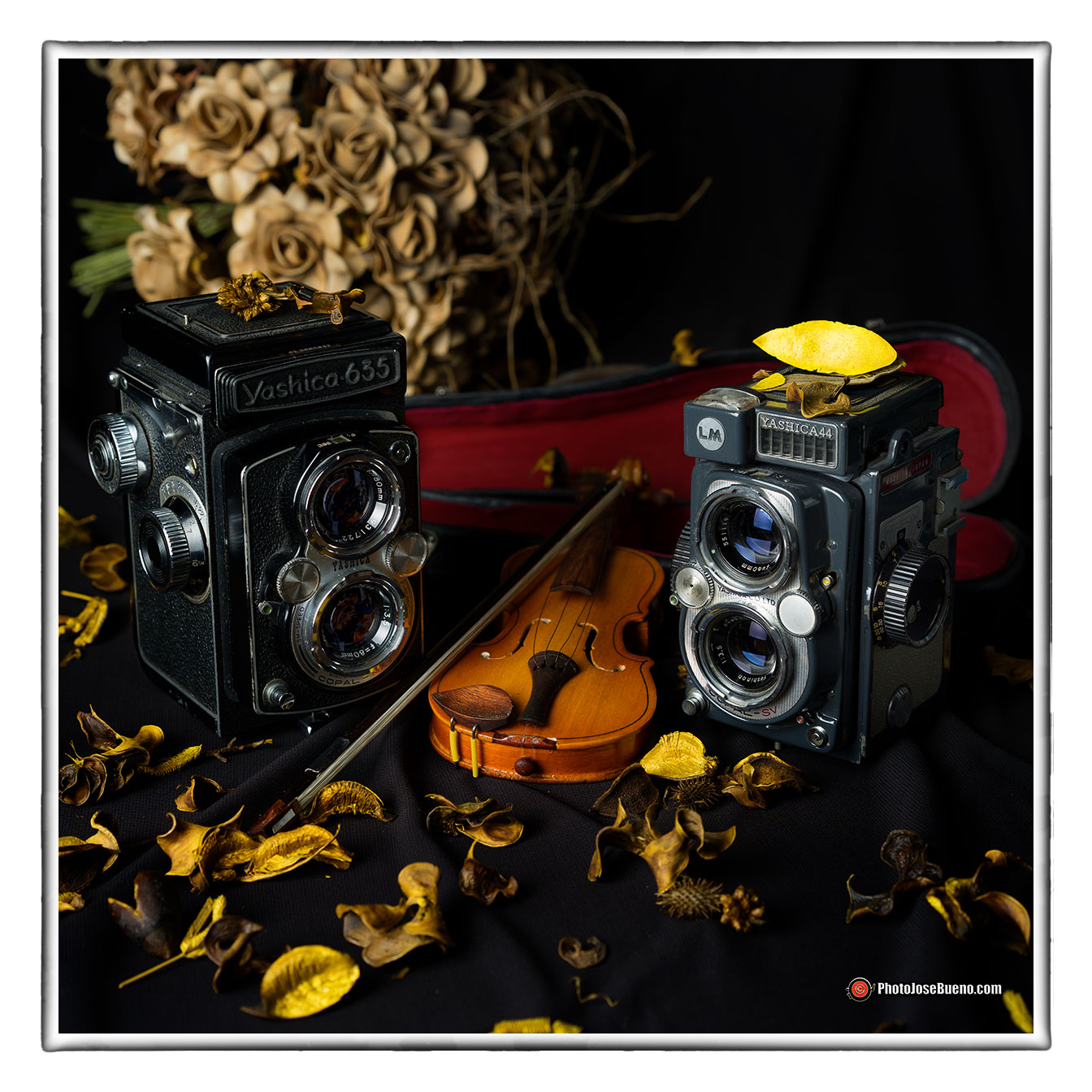
Sony A7R – Carl Zeiss 55mm. f:1.8
1/160 seg – f/5,6 – ISO 50
Para iluminar el bodegón, he utilizado una fuente de luz principal con un cabezal Multibliz u una ventana de doble tela para amortiguar la luz. Para compensar las sombras cambié el típico Lastolite por una luz contínua de Led. Una luz algo así como una combinación de luz antigua y luz moderna para seguir con la idea de todo lo utilizado en esta entrada.

En el bodegón las diferencias no se aprecian tanto si bien me gusta más el rango dinámico conseguido en las imágenes de la Sony A7R pero sinceramente es muy poca la diferencia. Si bien es cierto que all igual que en la foto de exteriores también la cantidad y definición es superior.
Como CONCLUSION se puede comprobar en las imágenes recortadas que la Sony no solo ofrece cantidad pues también ofrece mucha calidad. Creo que no volveré a realizar una inversión tan alta en algo digital como un respaldo pues siempre está la opción de alquilar pero no me arrepiento de cuando lo hice pues sigo disfrutando de la contundencia del disparador de la Hasselblad 503 y por supuesto de todas las ópticas Carl Zeiss que tengo para ese sistema.
Dicho eso, si en algún momento tengo que realizar un trabajo de estudio, es muy posible que lo realice con los dos sistemas, uno para aparentar y facturar y el otro para presentar por sus resultados. Creo que no hace falta decir cual es cual.
Hasselblad Phase One vs Sony A7R
A few years ago many photographers had to migrate to digital reel with all the more traumatic than assumed investment entry barriers imposed by the «computer revealed,» but we all got the batteries and more or less time we did.
The truth is that at that time, the ability of the digital system was very compromised and some brands and agencies forced to work with a digital back. To date I’m not sure if it was a way of selecting photographers more purchasing power, assuming the correlation with quality and brands is that there was who made the effort to retrofit systems to digital medium format.
At that time the dilemma was to invest in an expensive backup equipment to save medium format, I’m talking about an investment of 25,000 euros or stop working in such environments of high standing. It is true that there was a third option of renting something in this more complicated by the Spanish culture prefer investment (purchase) instead of spending (rent) era.
In my case I saved my Hasselblad buying a backup team I’ve ever amortized since then came the crisis, etc, etc.
But I remember my debut the brand new Phase One P20 put in my Hasselblad 503 with Carl Zeiss those who have given me so much satisfaction. Ah! and not forgetting the photometer though it is digital everything is very manual, including Hassel trigger flavor. But if the plot had much investment was consistent compared with a Nikon D200 also had at that time.
I wanted to take pictures of the Escorial Monastery, a majestic site. After taking several pictures had the same feeling when flushed reel, ie wanted to see revealed is that this support carries a purely informative display and in my case just use it to view the histogram.
I remember my pleasant surprise when I compared the photos and saw that the Nikon were correct but when I saw the details of which I took with Hasselblad and Phase One, discovered the big difference and at least my conscience was eased investment .
But … this support remains at the height? It has managed to overcome quality with smaller sensors, I mean the full frame?
I am aware of the maelstrom of marks overcome every day and have tried backups with 80 megapixels etc. but this time we’ll try and do a comparison of the super Hasselblad 503 with legendary Carl Zeiss objectives in Phase One P20 versus the Sony A7R, an entire 36-megapixel full frame.
In the test we put the same Carl Zeiss lens through an adapter and also see performance Carl Zeiss 80mm. f: 2.8 years with his back to the camera position for which it was designed, I mean the Hasselblad 503 and the new Carl Zeiss 50 designed for A7R. Both issues are equivalent by size sensor. If you keep reading you will know the results.
Whether in the studio or on location Sony A7R with Zeiss 55 mm. 1.8 has amply size is that as I said in other posts, is a perfect camera for calm images that there is little movement since its electronic viewfinder has a «delay» greater than an SLR. Face to use in travel or family photos in my opinion is too megapixel camera and you can lower the amount but that would be to use a sports car with wooden wheels.
The size of the file is very large, the photo is over 100Mb. uncompressed and that requires powerful hardware for processing as well as increased investment in hardware for storage. However the backup files P20 generates only 50Mb. without compression.
The Sony A7R has the advantage of being a very transportable equipment and even its greatest weakness is in the optics available for this system has the advantage that you can put adapters all, including optical Carl Zeiss Hasselblad. Has different light metering systems and focus peaking system with manual focus lenses.
Turning to the Hasselblad 503CX, go back many years in time and everything seems normal when you read the above paragraphs ceases to be and to have the 503CX has no battery.
The Hasselblad 503 with the viewer waist and a backup reel is not too big or heavy or at least I do not think so. It is true that when we change the back by one digital, in this case Phase One P20, weight increases greatly is that although we have battery, do not get your hopes up because we must continue to measure light with a handheld exposure meter and focus continues still manual and by definition, that can be changed as the Hasselblad is like a disassembled mechano since almost everything and of course it’s very easy to switch to approach the starting image.
Regarding the Phase One P20, is already obsolete backup is curiously both body Hasselblad as optical Carl Zeiss remain a past but digital age very fast, ergo everything you invest in digital today will be old and obsolete soon over a year. The Hasselblad system has many years working with the same system because since the Second World War the square design of these cameras has been used by photographers who have gone down in history for its quality.
As a curiosity that although the image goes to the sensor as well as when the backup is reel, as the seal goes in the goal, invented a cable that alerts the support that has made the shot, curious.
But let’s history and focus on the evidence. A priori would and forceful appearance in binding Hasselblad digital back Phase One had all the earmarks of merendarse quickly to a pocket camera almost nothing further from reality. I think getting ahead of the conclusion, the little Sony A7R has swept in the broadest sense of the old Hassel.
The tests have been performed outdoors with a light early in the morning just as dawn begins. For this I take a tripod and two bearings to shoot both cameras simultaneously under the same conditions as ISO, shutter speed and aperture. In the case of Hassel I’ve always done the shooting with mirror and raised to avoid trepitaciones and both houses were fired remotely. The Sony with a remote trigger and Hassel with a cable release.
But it is in the cut where we can really see the difference. Eyes Poster barely seen in the great photos. In the picture taken by Sony, you can read the word «London», something impossible to see into the cut on the right:
In both cases the optical were Carl Zeiss, the 80mm f: 2.8 Hasselblad Planar mounted 55mm and Carl Zeiss. f: 1.8 Sonnar mounted n the Sony A7R. Both carry the famous T of the multilayer system also known as antireflective iy developed by Carl Zeiss back in the 80s.
Back in the studio, mount a small tavern decorated with what we like, I mean some old cameras Yashica twin objectives of brand and that once marked style. To spice still life I threw the air dry leaves and thus mimic the autumn season in which we find ourselves. And I could not miss the music represented by a model of violin. Vivaldi’s Four Seasons were but unfortunately have not come out in the photo.
To illuminate the still life, I used a main light source with Multibliz head or a window double fabric to absorb light. To compensate for shadows I changed the typical Lastolite by a continuous LED light. A light something like a combination of ancient and modern light light to continue with the idea of everything used in this post.
In the still life differences are not appreciated as much while I like more the dynamic range achieved in the images of the Sony A7R but honestly there is very little difference. While we all like pictured outside also the amount and definition is superior.
CONCLUSION As you can see from the pictures cut that Sony not only provides much as it also provides high quality. I think that I will not make such a high investment in something digital as a backup because it is always the option to rent but do not regret when I did because I keep enjoying the forcefulness Trigger Hasselblad 503 and of course all optical Carl Zeiss that I have for that system.
That said, if you ever have to do work study, is very likely to make the two systems, one for show and bill and the other to present their results. I think it goes without saying which is which.